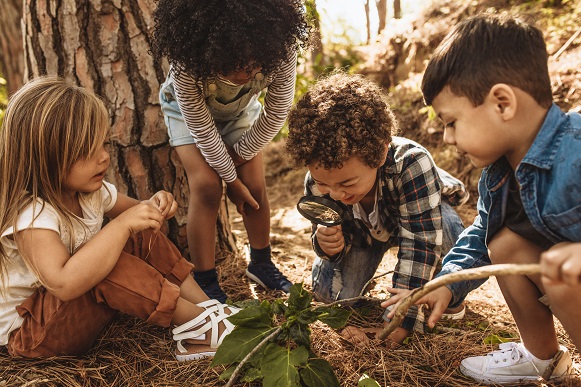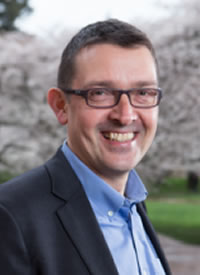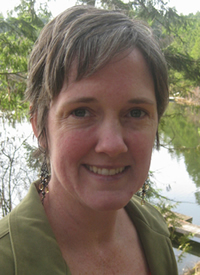Next Gen Navigator
Social Justice in the Science Classroom
Posted on 2020-05-26
Disclaimer: The views expressed in this blog post are those of the author(s) and do not necessarily reflect the official position of the National Science Teaching Association (NSTA).

Social Justice–Centered Science Teaching and Learning
Some cultures have historically been privileged in particular times and places, and as a result, some ways of knowing and doing science have had more social standing. We work from the stance that scientific ways of knowing and science education are fundamentally cultural and inherently political. All students have a right and a responsibility to learn how science has been implicated in creating many social inequities over time and how diverse scientific knowledges and practices can promote justice.
For example, the ice floe knowledge of Arctic Indigenous peoples was not initially brought into the larger scientific conversation on global climate science until sustained relationship building and deep listening between Indigenous and Euro-Western-trained scientists occurred. This knowledge held within Indigenous communities allowed for refinement of global climate modeling. Tribes and Indigenous peoples are engaged in hundreds of such efforts to understand and respond to climate change (see Chapter 15, Fourth National Climate Assessment for details).
Teachers can foster such cultural bridging in ways that help students recognize their agency to engage in social justice projects in ways informed by the sciences. Specifically, justice-oriented science educators should engage in culturally-based pedagogies that identify and leverage the knowledge and practice resources of students and their communities.
Science education can be used to support more just, sustainable, and culturally thriving futures—especially for those who have historically been and continue to be disenfranchised from science (Bang et al. 2017). To do this, we need to teach students that
- Making sense of the world has been, and continues to be, universal across diverse cultures throughout human history and thus people bring diverse experiences and sense-making repertoires to their science learning (see STEM Teaching Tool #55);
- Decisions made using scientific knowledge are tied to specific values and ideologies, some of which are more powerful in our social decision-making (e.g., giant corporate farms growing hybridized monocrops are more economical than small locally-owned farms that sustainably grow genetically diverse crops, but diverse crops are more resilient to climatic changes than the monocrops);
- It’s important to know how to develop and apply a wide range of knowledges and practices of science and engineering (along with other knowledge) in ways that support broad social justice movements (e.g., disrupting racial disparities in health and mitigating climate impacts for communities impacted by poverty); and
- Equally important are how the means and ends of learning and teaching are focused on commitments of human dignity, as well as fostering respect for and responsibility to other living organisms (see Learning in Places).
The approaches described in this issue’s articles highlight these dimensions of centering diverse sensemaking, supporting critical social analysis, positioning students to work toward justice, and focusing education on just, sustainable, and thriving futures for people and all living beings. We look forward to your examples and thoughts about how to further this work.
Resources to Explore
- Bang, M., B. Brown, A. Calabrese Barton, A. Rosebery, and B. Warren. 2017. Toward more equitable learning in science. In Helping students make sense of the world using next generation science and engineering practices, eds. C. V. Schwarz, C. Passmore, and B. J. Reiser, 33–58. Arlington, VA: NSTA Press.
- STEM Teaching Tool #67: Focusing STEM Learning on Justice-Centered Phenomena.
- STEM Teaching Tools PD Module: Learning to See the Resources Students Bring to Sense-Making.
- Bevan, B. and K. Wingert. 2014. Science isn’t “settled”: Disrupting canonical science to engage more students. Relating Research to Practice.
- Morales-Doyles, D. 2019. Justice‐centered science pedagogy with Daniel Morales-Doyle. NGSNavigators.
- NSTA. 2020. Supporting equity in the classroom. Next Gen Navigator, Jan. issue.
- Indigenous Education Tools
- Illuminative. Native Education for All initiative.

Philip Bell
Next Gen Navigator Guest Editor
Philip Bell is a professor of education at the University of Washington, Seattle, and editor of STEM Teaching Tools. He served on the committee that authored the National Research Council’s A Framework for K–12 Science Education, which guided development of the Next Generation Science Standards (NGSS). He and his collaborators have worked to implement the equity-focused vision of the Framework in classrooms, across school districts, in afterschool environmental science programs, through family robotics workshops, and across networks of educators, educational leaders, and scientists. Bell considers himself to be a settler working in partnership on science education efforts with non-dominant communities to promote educational and social justice in ways they find consequential. Newer work focuses on promoting ecological caring through science education in the face of global climate change.
Bell frequently shares resources and ideas on Twitter at @philiplbell. He has an educational background in the learning sciences, science education, computer science, and electrical engineering.

Deb Morrison
Next Gen Navigator Guest Editor
Deb Morrison, a learning scientist with the Institute of Science and Math Education at the University of Washington, is deeply engaged in research-practice partnership efforts around equity and justice in STEM learning contexts, particularly with respect to furthering climate justice. This work is done through a cultural lens centered on differential participation within and across varied communities of practice and seeks to disrupt oppressive structures limiting participation. Morrison has taught middle school science and is particularly interested in content intersecting with environmental literacy, justice, and sustainability. She is passionate about working with educators in practice and has undertaken such efforts in a wide variety of contexts and content domains.
Morrison earned a B.S. in geography at the University of Victoria, a M.S. in Plant Sciences and Environmental Sciences at the University of Western Ontario, and a Ph.D. in Curriculum and Instruction–Science Education at the University of Colorado at Boulder. More about Morrison can be found at http://www.debmorrison.me. Find her on Twitter @educatordeb.
Creating Science Learning Environments in Which Indigenous Students Can Thrive
Educators and researchers Megan Bang, Nikki McDaid-Morgan, and Alice Tsoodle discuss the development of ISTEAM (Indigenous science, technology, engineering, arts, and mathematics)—learning environments that support Indigenous students’ intellectual, emotional, and communal thriving. In these learning environments, Indigenous children learn that their own communities have rich knowledge systems that generatively intersect, and substantively differ, from those that they are normatively asked to engage in at school. Read more.
Justice-Centered Science Pedagogy: Learning Beyond the Boundaries of Equity and Culturally Responsive Practices
Investigating Environmental Racism in the High School Biology Classroom
Illinois biology teacher Jason Foster shares how he structures his science classes around justice-centered phenomena. Through his lessons, students learn to use scientific knowledge to advocate for their community, while also discovering how humane treatment and care should be essential for all people in all circumstances. Read more.
Note: The Next Gen Navigator is a monthly e-newsletter from NSTA delivering information, insights, resources, and professional learning opportunities for science educators by science educators on the Next Generation Science Standards and three-dimensional instruction. Click here to sign up to receive the Navigator every month.
The mission of NSTA is to promote excellence and innovation in science teaching and learning for all.
Equity NGSS Professional Learning old Three-Dimensional Learning Middle School Elementary High School


